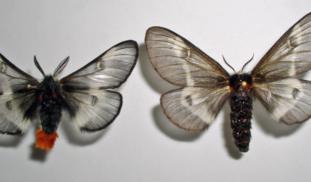Please wait...
About This Project
We are studying a population of moths in an unique oak ecosystem in a coastal barrier island environment to determine the relationship between the moth, its primary larval food plant, and the oak ecosystem it inhabits. This species, previously known only from Central Texas, has somehow evolved to live in a sand dominated coastal environment. Much of the known habitat will transition to Texas Parks & Wildlife management and our research will help in developing a sustainable land use plan.

Browse Other Projects on Experiment
Related Projects
How do polar bears stay healthy on the world's worst diet?
Polar bears survive almost entirely on seal fat. Yet unlike humans who eat high-fat diets, polar bears never...
Uncovering hidden insect diversity associated with a likely undescribed gall-forming midge
Does a likely undescribed species of gall-forming midge (pers. comm. Ray Gagné) on Eriodictyon plants (Yerba...
Macrofungi of the California archipelago
The eight islands of the California Archipelago are a well-studied biodiversity hotspot — but we know almost...


